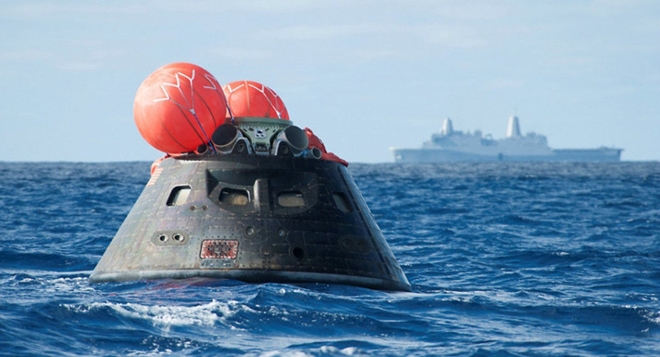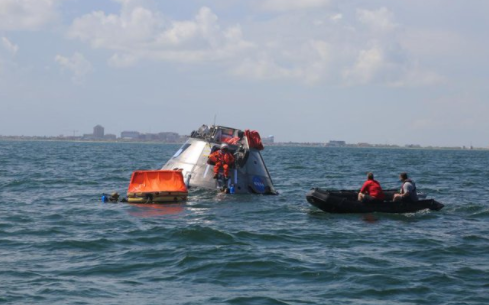NASA tests return capsule for next-generation orion manned spacecraft
Orion's reusable return capsule, 50 percent larger than the previous generation's Apollo return capsule, is meant to land in the ocean during a return trip to Earth. For the test, the capsule was transported out to the Gulf of Mexico and then deposited into the water four miles from the Texas shoreline.
This was done to specifically test Orion's exit procedures. The capsule is designed to sustain a crew for as long as 24 hours after splashdown while they wait for a ship to retrieve them. However, if something goes wrong (e.g. a fire or a leak), the crew needs to be able to exit the capsule and get to safety on their own.
 |
To that end, Orion is also equipped with an inflatable orange raft. The astronauts tested their ability to exit the capsule and deploy the raft without outside assistance. This is easier said than done for an astronaut returning from space: extended periods of time in space leaves the human body with weakened bones and muscles.
"Astronauts returning to Earth in Orion will have spent many days in space, and we want to make sure the last part of their journey goes smoothly no matter what kind of conditions they land in," said Tom Walker, the NASA official who led the mission, in a statement. "Our testing in the Gulf of Mexico gives us an opportunity to practice and evaluate our plans and hardware for how to get crew out of Orion as safely and efficiently as possible."
 |
NASA has also equipped Orion with redundant exit procedures to maximize crew safety. The redundancies give "recovery personnel and mission controllers flexibility to account for the crew's health, weather and the condition of the recovery personnel and equipment in the area in real-time," according to NASA officials.
For the landing itself, Orion is equipped with five airbags to ensure that it remains rightside up in the water. The airbags were tested at NASA's Johnson Space Center's Neutral Buoyancy Lab.
The ambitious Orion spacecraft is designed to carry four astronauts into or beyond Low Earth Orbit. Its primary missions are to facilitate human exploration of near-Earth asteroids and of Mars. NASA began work on Orion in 2010 alongside contractors Airbus and Lockheed Martin.

